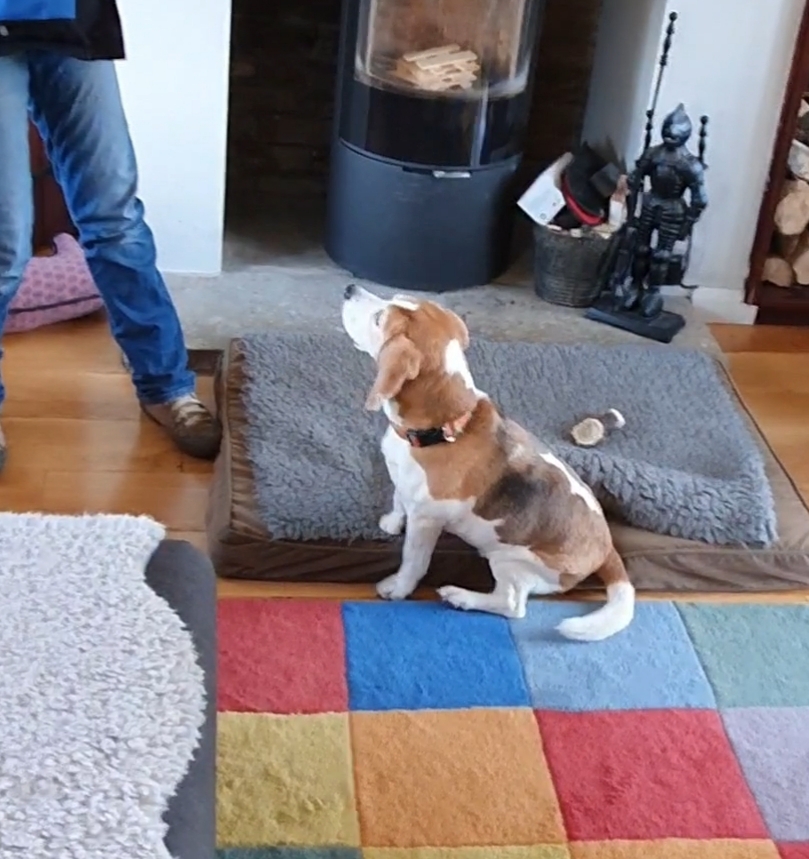ANXIETY AND GRIEF WHEN LOSING A SOUL MATE
- fern ember
- Mar 13, 2020
- 4 min read

Bette is a sweet little older beagle of 9 years who has struggled a bit with life since losing her soul mate. She has lived with Oscar since she was a puppy and relied on him to help her find her way through the world. He gave her confidence and she has grieved his loss, finding life without him daunting.
She has always been uneasy with unknown dogs. Encountering them without Oscar can leave her stressed and uneasy for days.
She wants plenty of distance from dogs she doesn't know, so she lunges and barks at them to keep them away.
She can also bark at triggers she sees through the window - which can cause a bit of a din! Beagles have deep chests and are bred to give big, loud barks, which can disrupt anu peaceful time her mums may have at home.
She can also be a little uncertain of new people and masks her anxiety with agitation, "busyness" and occasional humping.
HAPPY HUMPING?
Humping is an interesting behaviour. It's often seen as being sexually driven, which it can be in young dogs. Surges of testosterone and adrenaline can result in mounting other dogs during play, although some dogs will grab
anything they can get hold of.
Both these hormones are released in excited, agitated dogs and, while the behaviour may have started as sexual play, it can become a habitual stress-buster. They hump as a release of tension. It feels good, so they do it to make themselves feel better when they feel bad.
Getting cross with a humping dog adds feel-bad to the feel-bad of whatever triggered them to do it in the first place.
Instead, learning to recognise a dog's signs of anxiety and knowing what triggers agitation and excitement means that she can be managed so that she doesn't feel the need to hump.
STRESS RELIEF
This can be done by keeping the environment as stress free as possible and teaching her how to calm herself down constructively.
Many dogs calm themselves by chewing, licking and digging. Giving an anxious dog access to things they can shred or chew (such as the inside of toilet rolls) can stop anxious behaviours like paw licking.
Stuffed Kongs and spread lickimats or lick bowls are great ways to soothe a worried dog and can provide a good 20 minutes of entertainment.
STRESS-BUSTERS
Having an outdoor sandpit or digging area is a good outlet for dogs who need a physical release of the hormones that build up when they feel stressed. Cortisol and adrenaline can cause fatigue and chronic levels can result in inflammatory conditions and both skin and digestive disorders. Having a way of releasing these hormones through movement can really help dogs like Bette and many dogs love to dig!
Bette is also a Ninja Destroyer of soft toys, which is another stress-busting strategy. Having plenty of chewable items, such as Yakers bars, pizzles and good quality stag bars lying around on the floor all the time means she can self-soothe by having a good chew whenever she needs to.
STOPPING BARKING AT THE WINDOW
If you go to my YouTube channel, you can see a video from out session, which shows me teaching her mums how to reduce her barking at the window by Shaping her to move towards her bed when she sees something that triggers her.
This method is so effective that I was able to train our little crew of 5 whippets and a staffie to lie in their beds within two weeks whenever they heard rowdy students coming home next door!
There is no trigger in the video - I'm walking Bette and her mums through the process so that they can practise in the garden.
Practising reactions we want is an important part of training. It's the same as teaching recall or loose lead walking. The more we practise without distractions, the more our responses and our dogs' responses become programmed into brain and body.
Then the movements become habitual and start to over-ride old reactions, such as our anxiety and tension (which tend to kick-in when our dogs do that embarrassing barking and thrashing about at the end of the lead). When we feel tense, we tend to grip the lead and our adrenaline and cortisol shoot sky high. Our dogs may react to the tension in the lead but they can also smell the stress hormones surging through our system. As a result, their own reactions become intensified and they can reach meltdown.
FIGHT/FLIGHT MODE
No one (person or dog) can reach rational decisions when they're feeling highly emotional. Our whole system shuts down and blood flows to the parts of the body that need to respond quickly in situations that are perceived as dangerous. This means the brain gets bypassed and heart, lungs and legs are on high alert. We can't think straight, our dog can't think straight. We just need to escape. And of we can't do that, our bodies are ready to fight their way out of it.
The result is barking, lunging dog and cross, embarrassed owner.
By practising how to react to those situations in the safety of the garden, we can teach our brains and bodies (both dog and human) to react calmly.
Practising in the garden programmes rational, thoughtful responses where we can both learn to work together, calmly, to get out of the situation.
I've had a couple of updates since we met Bette and her mums. She is making some good progress, thanks to their intelligent and thoughtful approach to working with their special little dog.





























Thank you for your lovely comment, Gail.
This is a wonderful read Fern, thank you for sharing.